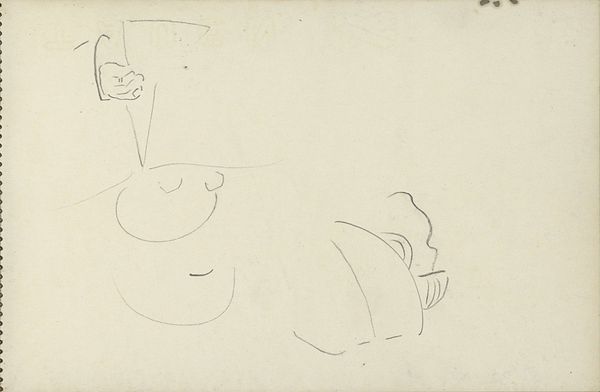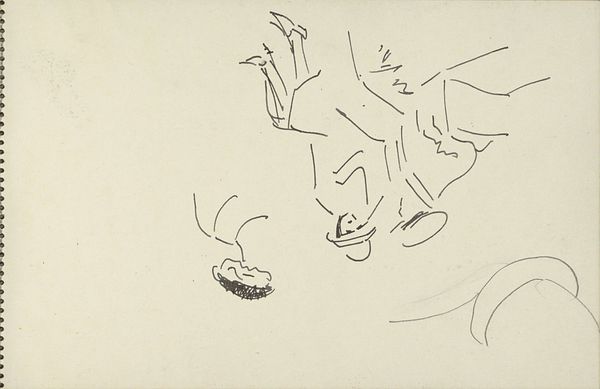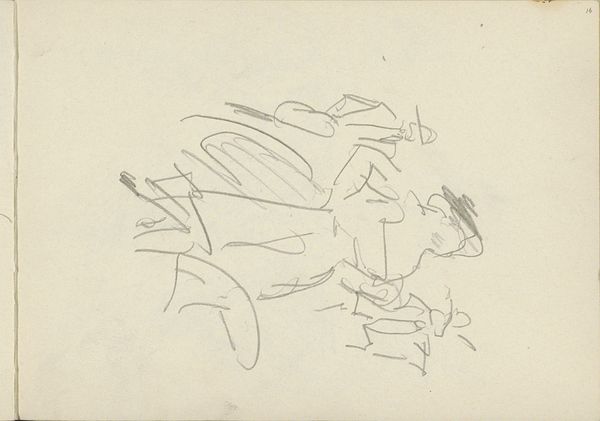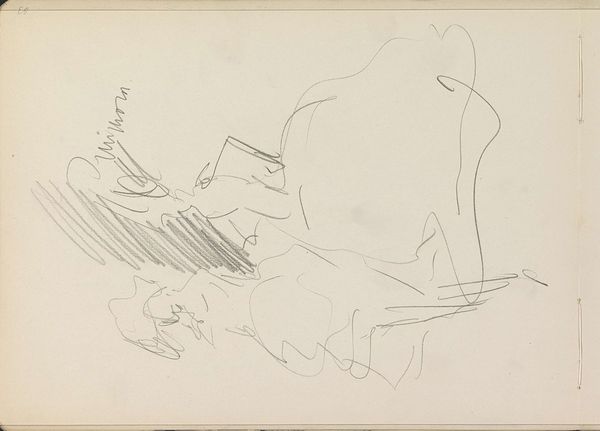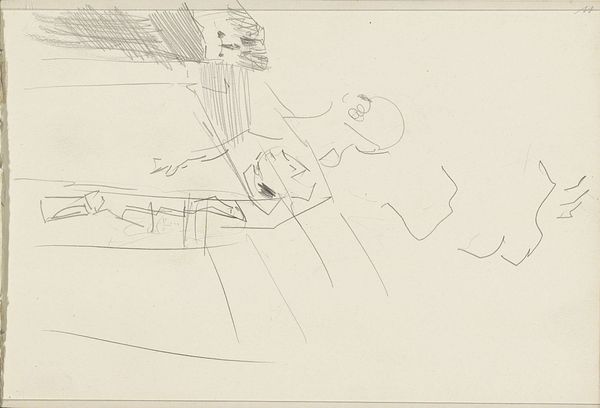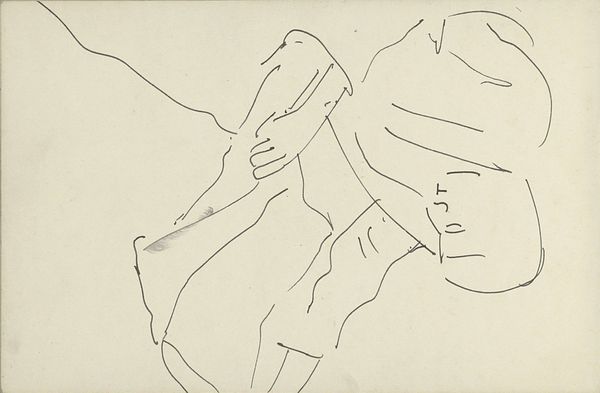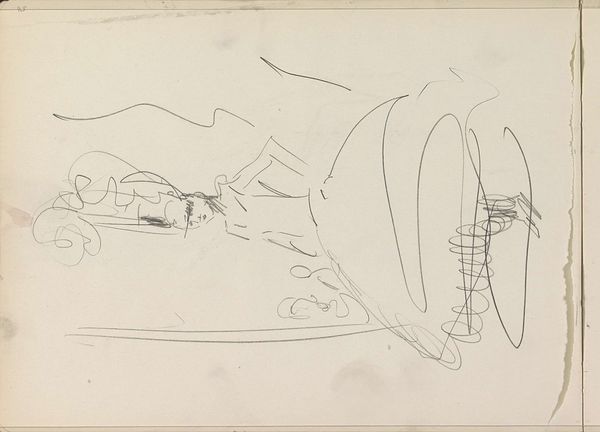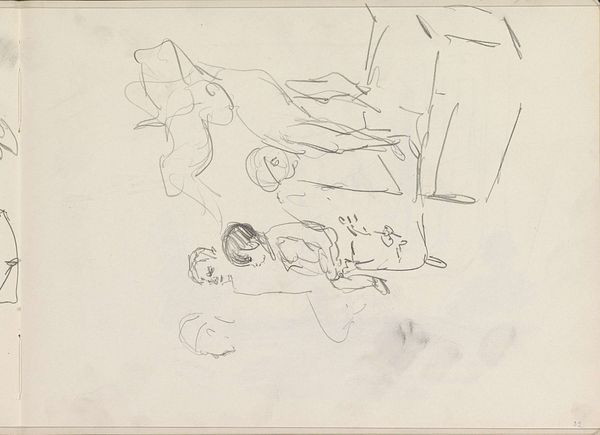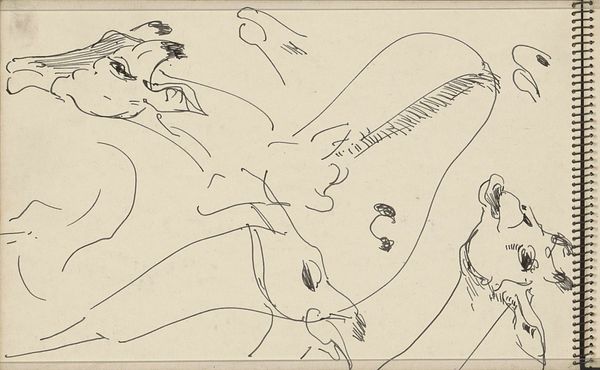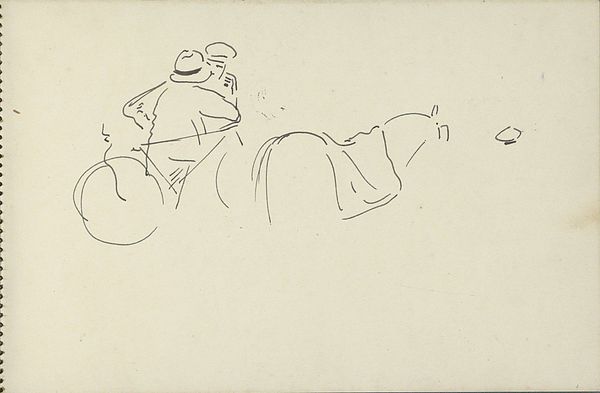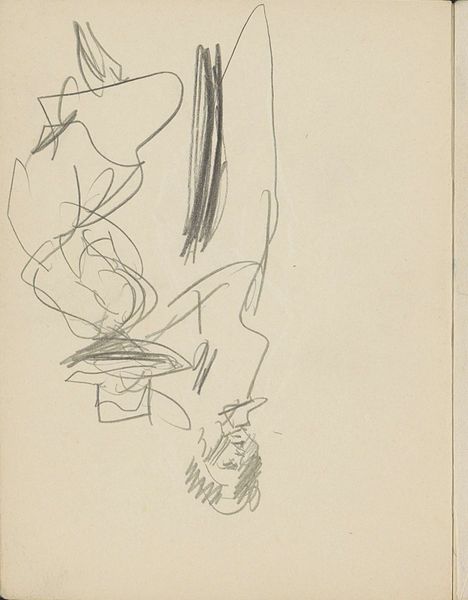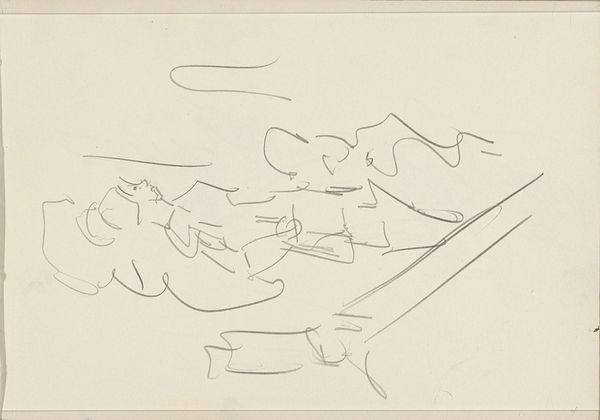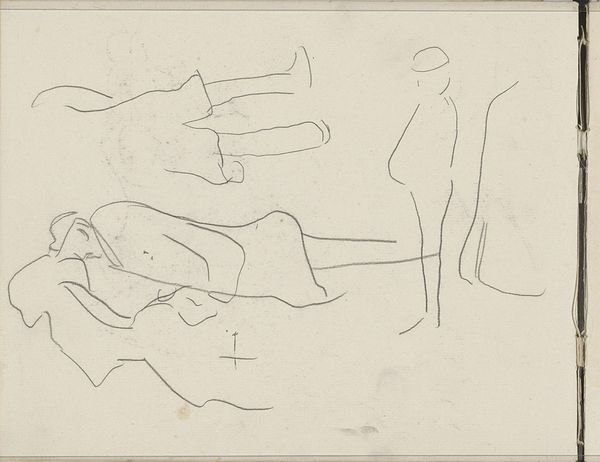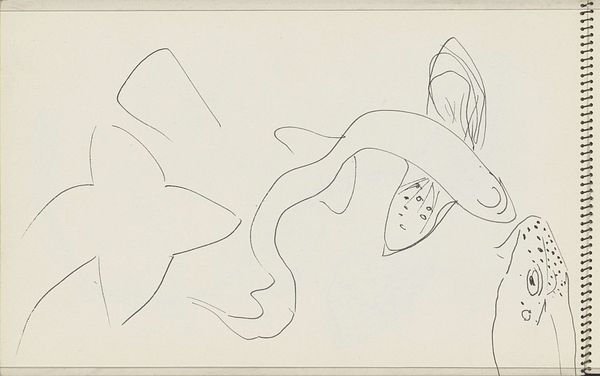
drawing, ink
#
portrait
#
drawing
#
table
#
figuration
#
ink
#
group-portraits
#
line
#
modernism
Copyright: Rijks Museum: Open Domain
Editor: Here we have Carel Adolph Lion Cachet's "Twee vrouwen aan een tafel," or "Two Women at a Table," an ink drawing from around 1930, at the Rijksmuseum. There's a definite intimacy to this work, despite its loose, almost hurried linework. What strikes you about this piece? Curator: What I see is a snapshot of domesticity, perhaps even a clandestine meeting. Cachet's quick lines capture a sense of urgency or fleeting time. Consider the historical context: 1930, women’s roles are rapidly evolving. Do we see an assertion of female companionship here? Is it a challenge to the male-dominated artistic establishment? Editor: I hadn't considered that reading, that’s a great angle. It looks more like a casual meeting of friends to me. Do you think his style was a deliberate political choice, or just his aesthetic? Curator: It's a complex question. Style itself can be a political statement. Modernism, with its rejection of traditional forms, provided a space for artists to express changing social and political realities. Cachet’s seemingly casual lines could be read as a rejection of the polished, idealized portrayals of women common in earlier art historical periods. The choice of ink, a readily accessible medium, also speaks to accessibility and a democratizing of art-making. Editor: So, seeing it that way makes it more than just a sketch of friends? Curator: Exactly. The context reframes it. By analyzing the visual language and understanding the historical background, we can unpack the deeper meanings embedded within the work. Editor: This has definitely broadened my understanding, thinking of art as not just aesthetically pleasing, but as part of a larger conversation. Curator: Precisely. It is about constantly questioning, re-evaluating, and acknowledging that a piece of art can reflect society and the changes occurring within.
Comments
No comments
Be the first to comment and join the conversation on the ultimate creative platform.
